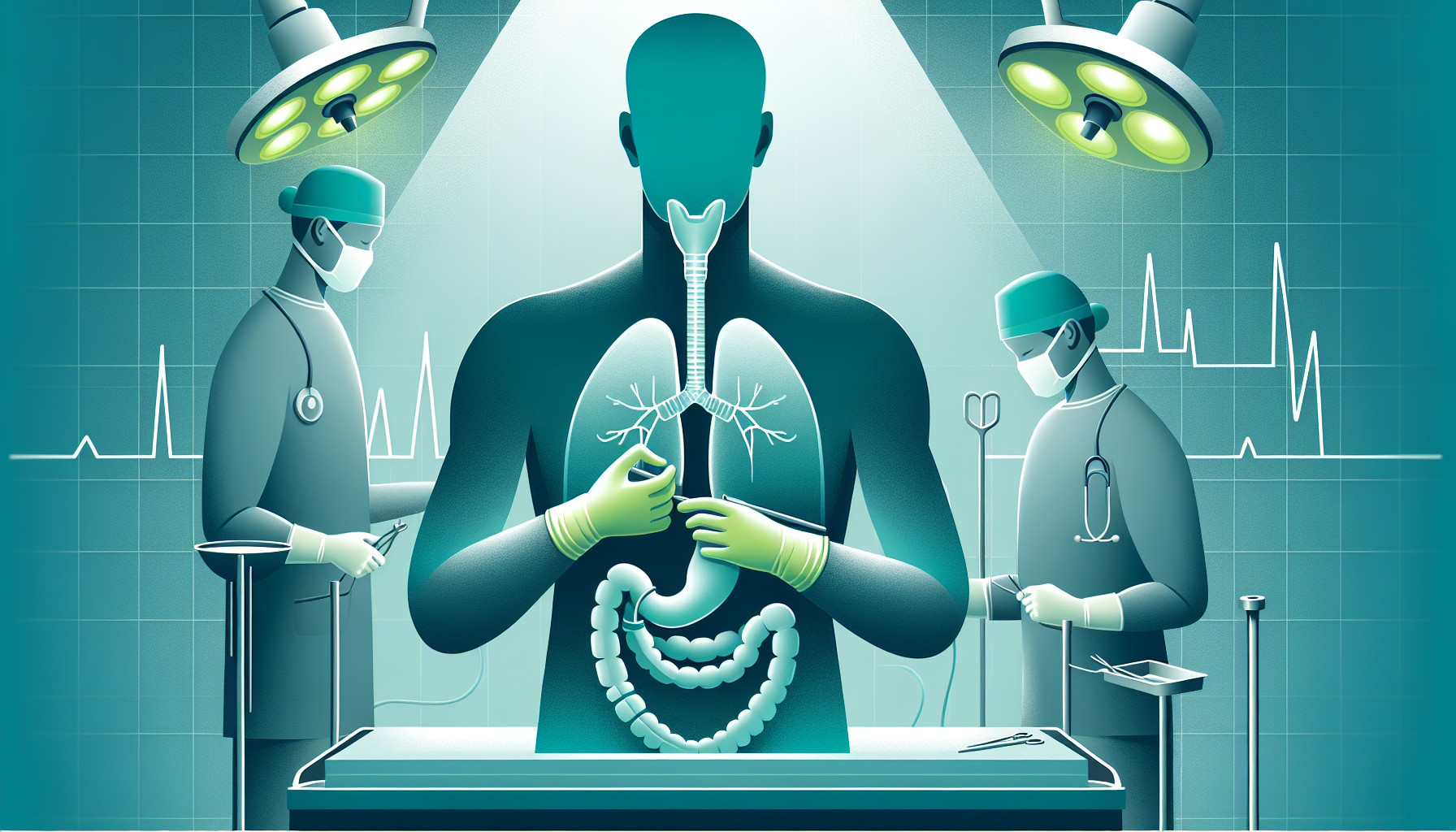Our Summary
This research paper is about a major surgery called esophagectomy, which involves removing part of the esophagus. Even when performed by experienced surgeons, this operation has a high rate of complications, up to 59%. The authors explore whether using certain additional procedures during and after the surgery can help reduce these complications. These additional procedures include enteral access (creating a pathway to the gut for nutrition), nasogastric decompression (removing excess air and fluids from the stomach through the nose), pyloric drainage (helping empty the stomach), and anastomotic buttressing (strengthening the connection between two parts of the body after surgery).
FAQs
- What is an esophagectomy and what does it involve?
- What are some of the surgical adjuncts used in esophagectomy?
- What is the complication rate of esophagectomy, even in expert hands?
Doctor’s Tip
One helpful tip a doctor might tell a patient about esophagectomy is to follow all postoperative care instructions carefully to reduce the risk of complications. This may include proper wound care, medication management, and following a specific diet plan. Additionally, it is important to attend all follow-up appointments with your healthcare team to monitor your recovery progress.
Suitable For
Esophagectomy is typically recommended for patients with esophageal cancer, as it is often the most effective treatment option for this disease. Other types of patients who may be recommended for esophagectomy include those with Barrett’s esophagus with high-grade dysplasia, severe esophageal strictures that are not responsive to other treatments, and patients with esophageal motility disorders such as achalasia.
It is important to note that esophagectomy is a major operation with a high complication rate, so it is typically recommended for patients who are otherwise healthy and able to tolerate the surgery. Patients with significant comorbidities or advanced age may not be considered good candidates for esophagectomy.
Overall, the decision to recommend esophagectomy for a patient is based on a variety of factors, including the type and stage of their disease, their overall health and ability to tolerate the surgery, and the potential benefits and risks of the procedure. It is important for patients to discuss their individual situation with their healthcare provider to determine if esophagectomy is the most appropriate treatment option for them.
Timeline
Before esophagectomy:
- Patient undergoes preoperative evaluation, including imaging studies and blood tests
- Patient may need to follow a specific diet or take medications to prepare for surgery
- Patient meets with the surgical team to discuss the procedure, risks, and potential outcomes
- Patient may need to stop smoking and avoid certain medications before surgery
After esophagectomy:
- Patient is closely monitored in the intensive care unit (ICU) immediately after surgery
- Patient may have a nasogastric tube for drainage and feeding
- Patient may have a feeding tube placed for nutrition
- Patient may undergo pyloric drainage procedures to prevent gastric emptying issues
- Patient may have anastomotic buttressing to reduce the risk of leaks at the surgical site
- Patient may experience pain, difficulty swallowing, and changes in diet post-surgery
- Patient undergoes follow-up appointments and monitoring to monitor recovery and address any complications
What to Ask Your Doctor
- What is the reason for recommending an esophagectomy?
- What are the potential risks and complications associated with the surgery?
- What is the expected recovery time and what can I expect during the recovery process?
- Will I require enteral access or a feeding tube after the surgery? If so, for how long?
- Will nasogastric decompression be necessary following the surgery?
- Will a pyloric drainage procedure be performed during the surgery?
- What measures will be taken to reduce the risk of complications such as anastomotic leaks?
- How often will follow-up appointments be needed after the surgery?
- What is the success rate of this surgery in terms of long-term outcomes?
- Are there any alternative treatment options to consider before proceeding with an esophagectomy?
Reference
Authors: Watkins AA, Kent MS, Wilson JL. Journal: Thorac Surg Clin. 2020 Aug;30(3):315-320. doi: 10.1016/j.thorsurg.2020.04.009. Epub 2020 May 22. PMID: 32593364
